Results
Seasonal variation in CH4 emission during the growing season
There is a seasonal variation in CH4 emissions for both P. australis and C. rostrata in both Lake Erssjön and Lake Följesjön. The highest diel mean was recorded in June during the first measurement occasion in Lake Erssjön for both plant species. However, in Lake Följesjön the highest diel mean was measured during the third measurement occasion for C. rostrata and during the fourth measurement for P. australis. In general, CH4 emissions decrease towards the end of the growing season. Seasonal variations in CH4 emission per g DW were also apparent during the growing season.
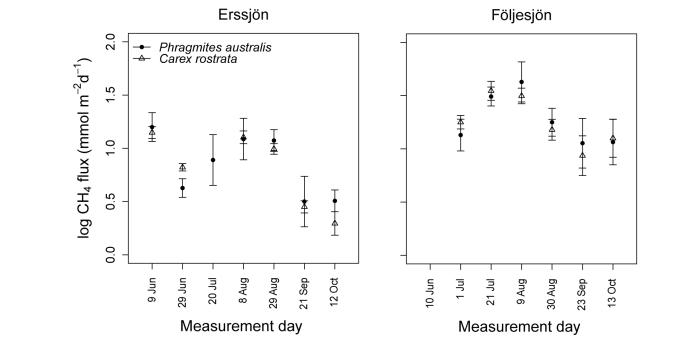
Differences in CH4 emission between species
CH4 emissions calculated per m2 from E. fluviatile were smaller than from the two other species. However, E. fluviatile had larger CH4 emissions per g DW.
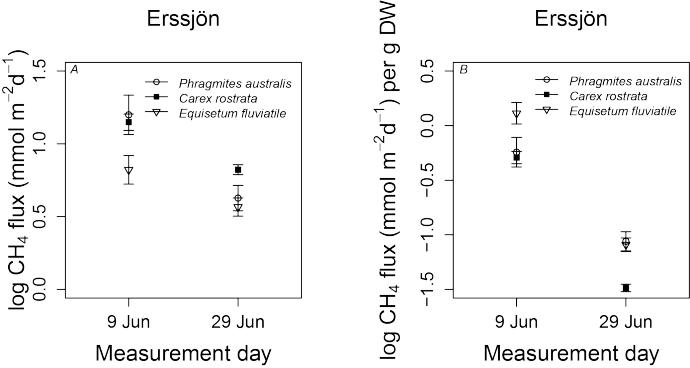
Diel variation in CH4 emission
There were large variations in the CH4 emissions within days, during the growing season. However, recurrent peaks in CH4 emissions at the same time on the different measurement occasions were not found for any of the species. The variation during the days was higher for P. australis than for C. rostrata in Lake Erssjön. This pattern was less obvious in Lake Följesjön.
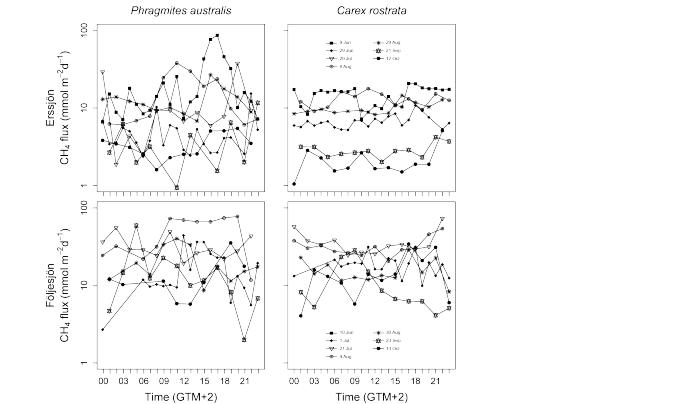
Model averaging for CH4 emission
When modelling CH4 emissions per square meter using all available data, two explanatory variables shown to be important: lake and air temperature. The results clearly showed that CH4 emissions from emergent aquatic macrophytes in Lake Följesjön were much higher than from Lake Erssjön. When calculating CH4 emissions per m2, emissions did not differ between P. australis and C. rostrata. The GLZ also detect a change in CH4 emission for the measurement days during the growing season. Air temperature was the environmental variable that was best correlated with CH4 emission, where CH4 emissions increased with increasing temperature. On the other hand, an increase in light and wind had a negative effect on CH4 emissions (Table 1).
When modelling CH4 emissions per g DW per m2, there was a significant difference between the emergent aquatic macrophytes (P. australis and C. rostrata), while the lake type contributed little to the model. Furthermore, several environmental variables seemed equally important in the model, where CH4 emissions increased with air temperature and air pressure but decreased with increasing light and wind (Table 2).
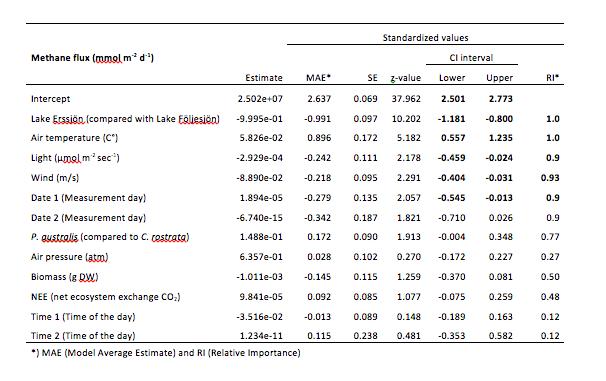
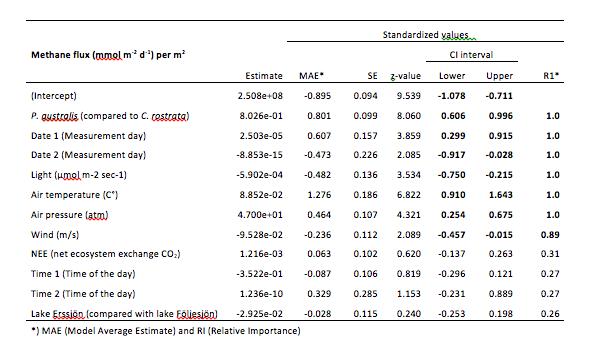
Responsible for this page:
Director of undergraduate studies Biology
Last updated:
05/26/15
